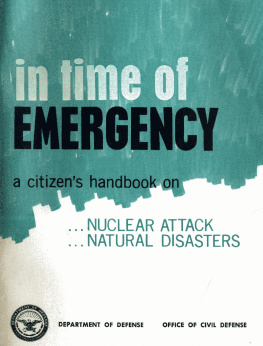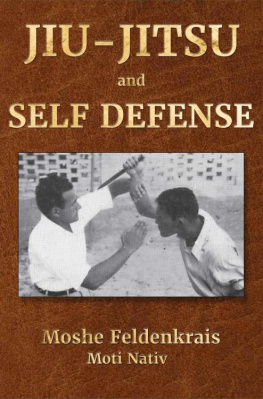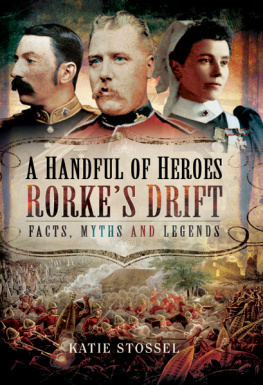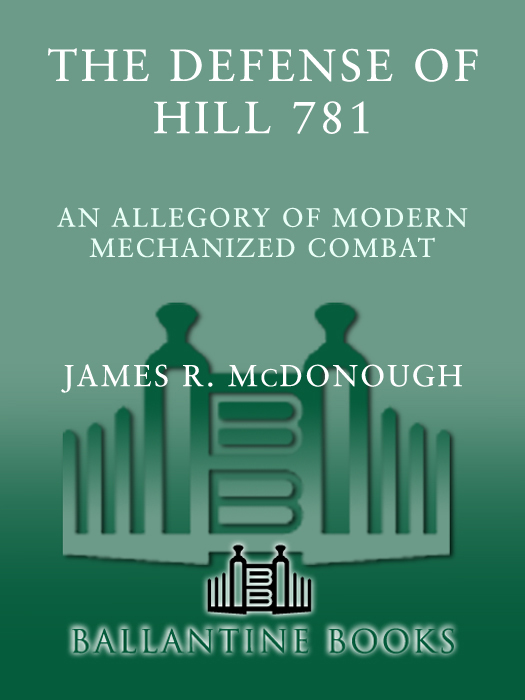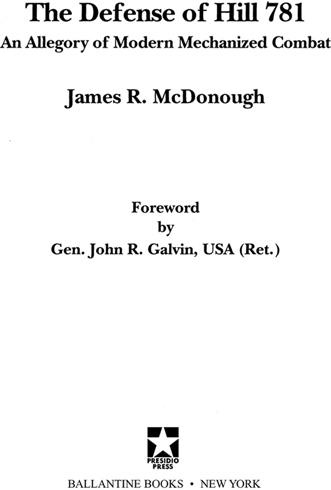With appreciation to Hal Winton and Ted Pusey, who gave me the idea for this book, and in memory of Sergeant Masterson who gave his all for the readiness of our Army.
This book is dedicated to Americas straight and stalwart soldiers who have trained hard in times of peace to be ready for war, and have thereby kept the peace.
Foreword
One of the best thinkers in todays United Stated Army has written what at first seems to be a lighthearted and simple story. A lieutenant colonel dies (from eating the armys rations) and finds himself in Purgatory, which turns out to be a place in the high desert not far from Barstow, California. Here he must atone for his sins and prove himself worthy of Heaven by leading a battalion of soldiers against a well-armed and hard-bitten enemy.
The place is the National Training Center, the armys premier installation for development of tactical leaders through hands-on applicationbut of course the place is also Purgatory, where souls pay for the sins of a life that is now past. The weapons are realthe rifles fire bullets, not blanks, and the battle is for keeps. At the same time, there are observers who monitor and critique the actions of the participants. McDonoughs imagination takes the reader from the real world to the world of games, and from there, well, to Hell and backor at least to a very tough Purgatoryand as the book goes along, all of these places become one and the same in a compelling and fascinating departure from worldly reality. The reader becomes the victim of a cordial kidnapping and is led off into circumstances that require what Coleridge called a willing suspension of disbelief.
Jim McDonough deftly mixes several sets of imagery to stretch the imagination of the reader and move him into a fascinating world of alternating fancy and fact. There are many levels of experience captured here, all flavored with a subtle and understated humor that any soldier, and especially those who have gone through the National Training Center, will find delightful.
What is the meaning of all this? The secret: McDonoughs book is a training text, a compilation of lessons learned in this desert school of hard knocks, presented as the story of a single leaders trials and errors as he fights and learns his way to salvation. The real National Training Center, conceived in the late 1970s and built at Camp Irwin, California, where World War II soldiers learned desert fighting, is now a marvel of technological developments where instruments follow every action and every communication to provide the ability to review in detail the clash of military units. The fighters themselves, opposed by an ominously capable high-technology enemy, fire laser beams instead of bullets and reach a level of reality of combat that provides them that most important opportunitythe chance to fight and die and rise again to fight another day (or night) and thus to learn what before only real battle and real death could teach. There will never be a way to tell how many lives the National Training Center saved already on the battlefields of Desert Storm, and how many it will save in the future, but whatever the number, this place is providing the most productive, the most useful training any army has ever had. McDonough tells its story, and describes what there is to be learned there, better than anyone has done or probably will do.
McDonoughs whimsical hero, Lieutenant Colonel A. Tack Always, is a good soldier whose main error in life was a vanity that he cherished and displayed at the expense of others. Sergeant Major Hope, his guardian angel in this allegorical tale, tells him that he must atone for his overweening pride in his abilities as an airborne ranger. Because of it, says Hope, You kind of put a whole bunch of other people down you just didnt let them think that they were being all they could be, and if they were, it just wasnt anything to write home about.
The lieutenant colonel takes on his mission and leads his ghostly battalion, resolved to win the war of the training center and reach his heavenly goal, but he has a lot to learn. He suffers defeat after defeat, but he carefully and thoughtfully reviews his errors (helped by the relentless pressure of implacable observers who make him and his troops point out and acknowledge their many mistakes). Slowly A. T., who knew very little about the life of armor and mechanized units and their tactics and logistics, becomes a new man, a wise and canny leader. He and his unit grow with each new dose of adversity until he begins to turn the tables on his powerful enemy.




